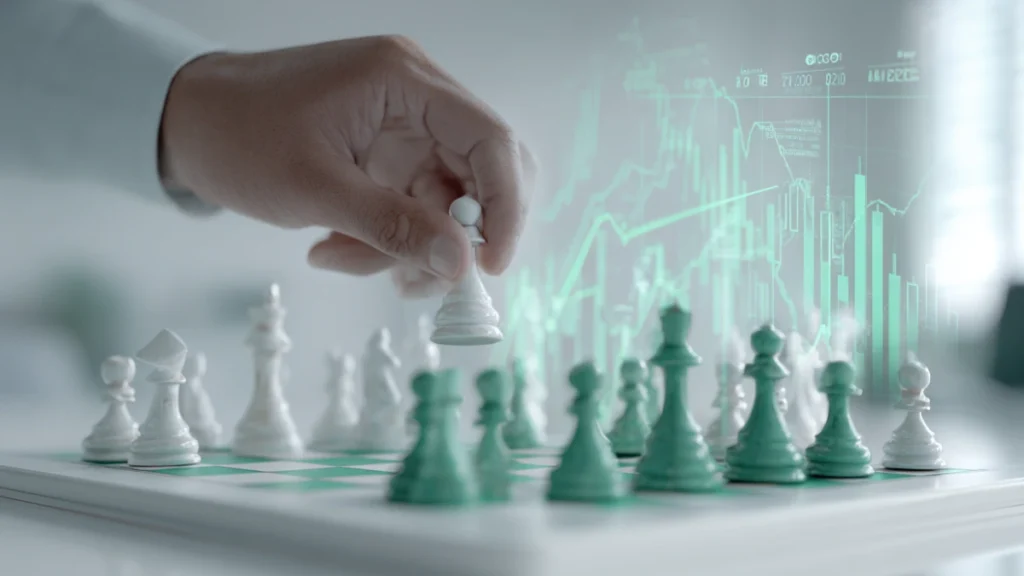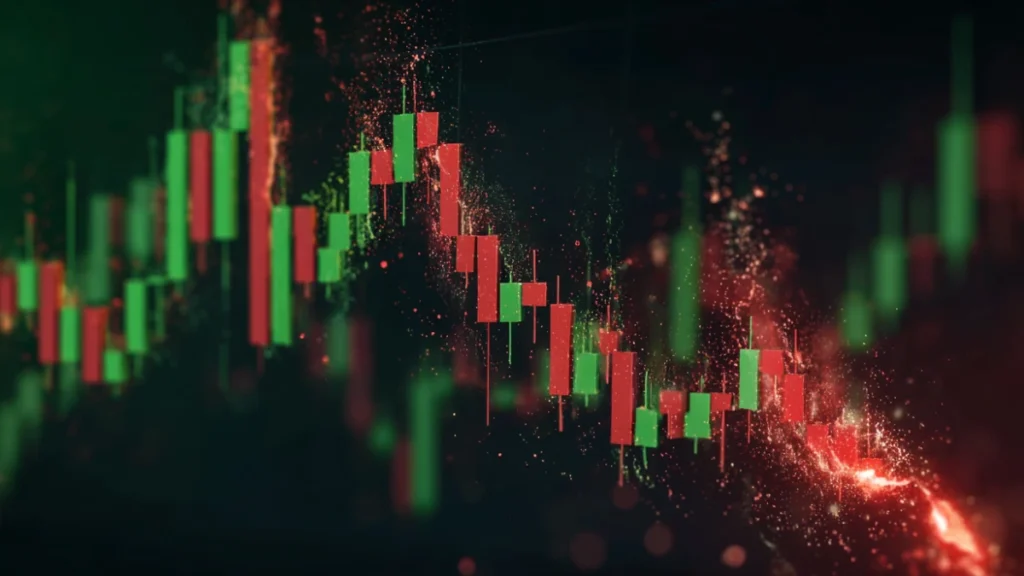Table of Contents
Introduction
You can have the best trading setup in the world — sniper entries, perfect chart analysis, and even solid backtesting.
But if you ignore risk management, your account will disappear faster than your next trade.
Risk management is the real edge that separates long-term winners from blown accounts. It’s not about avoiding losses — it’s about controlling them. Because in trading, survival is the first rule of success.
At Mastery Trader Academy, we’ve seen traders pass funded account evaluations with average win rates — simply because they followed risk rules religiously. On the flip side, we’ve seen talented traders fail because they couldn’t manage emotions or control their exposure.
In this beginner’s guide, you’ll learn:
• The #1 rule every trader must follow to avoid blowing up
• How to calculate your exact position size based on account size and stop loss
• Why daily loss limits are more important than win rate
• How to protect your account during losing streaks
• Real examples of risk models used by prop firm traders
Whether you’re new to trading or trying to pass a funded challenge, this guide will help you build the one thing you need more than a setup: discipline under pressure.
🧠 What Is Risk Management in Trading (and Why It’s More Important Than Strategy?)
Most beginners obsess over finding the perfect entry. But seasoned traders know the truth:
💡 It’s not your strategy that protects your capital — it’s your risk management.
📌 So what is risk management in trading?
Risk management is the set of rules you use to:
• Limit losses on bad trades
• Protect your capital during losing streaks
• Size your positions properly so no single trade can destroy your account
• Stay in the game long enough to let your edge play out
🎯 Here’s Why It Matters More Than Strategy:
- 📉 All Strategies Lose Sometimes
Even the best setups will go through drawdowns. Risk management is what helps you survive them.
A good strategy with bad risk management = blown account.
An average strategy with solid risk management = long-term growth.
- 🧠 Emotions Run Wild Without It
When your losses are too big, fear, revenge, and panic take over. Small losses are easier to handle — mentally and financially.
- 🚪 It Keeps You in the Game
Blowing up your account after 3 trades means you never get to use the strategy you worked so hard to build. Risk management gives your edge time to work.

🔑 The 3 Core Pillars of Risk Management:
We’ll explore each one in the next sections:
- Position sizing — how much to trade per setup
- Stop-loss placement — how to define where you’re wrong
- Daily risk limits — how to protect your account from tilt
📊 How to Calculate Position Size Like a Pro (Without Guesswork)
One of the biggest mistakes beginners make is trading random lot sizes. One trade risks $5, the next $500. That’s not a strategy — it’s gambling.
Professional traders calculate position size based on:
• Account balance
• Risk per trade (%)
• Stop-loss distance
Let’s break it down step-by-step so you can size your trades with precision.
🔢 Step 1: Decide How Much You’re Willing to Risk Per Trade
This is your risk percentage — the max amount you’re willing to lose on a single trade.
Most professionals (and funded traders) risk 0.5% to 1% per trade.
💡 Example:
On a $10,000 account, 1% risk = $100 max loss per trade
🔍 Step 2: Know Your Stop-Loss Distance
This is how far (in points, pips, or ticks) your stop loss is from your entry.
💡 Example:
You’re trading Gold (GC), and your stop loss is 2.0 points away
🧮 Step 3: Use This Formula to Calculate Position Size
Position Size = (Account × Risk %) ÷ Stop Size
💡 Example:
• Account = $10,000
• Risk = 1% = $100
• Stop-loss = 2 points
• Tick value = $10 per point (Gold Futures = $10/point on 1 micro)
📌 Position size = $100 ÷ $20 = 5 micro contracts
That means you can trade 5 contracts with a 2-point stop and still stay within your $100 risk.
🛠 Tools to Help:
• Position size calculators (Babypips, MyFXBook, EarnForex)
• NinjaTrader & TradingView have built-in tools
• Create a simple Excel or Notion sheet for fast daily inpu
❗Why This Matters:
If you don’t size properly, you:
• Blow your daily limit with one bad trade
• Overreact emotionally
• Struggle to grow consistently
📌 Size your trades like a professional, even if you’re still learning the rest.
🛑 How to Set a Stop Loss the Smart Way (Not Just Based on Feelings)
Most traders either place their stop loss too tight and get stopped out instantly — or too wide and take massive losses. Neither is smart risk management.
A proper stop loss isn’t emotional. It’s strategic. It tells you when your trade idea is no longer valid.
Let’s break down how to set stop losses the right way.
🎯 What Is a Stop Loss?
A stop loss is a pre-set level where your trade automatically exits if the market goes against you. It protects your account from large, unexpected losses.
📌 A stop loss should never be “just in case” — it should be where your setup is wrong.
🧠 3 Smart Ways to Set a Stop Loss
- Structure-Based Stop Loss
Place your stop beyond a key technical level (swing high/low, support/resistance zone, or FVG edge).
💡 Example:
If you’re buying after a support bounce, place your stop just below the support — if it breaks, your setup is invalid.
- Volatility-Based Stop Loss
Use ATR (Average True Range) or recent price movement to gauge how far price typically moves.
💡 Tip:
If the ATR on the 15-minute chart is 25 pips, setting a 10-pip stop is unrealistic — you’ll get stopped out by normal price action.
- Fixed Risk Stop Loss (With Size Adjustment)
Use a fixed dollar risk (e.g., $100/trade), and adjust your position size based on stop distance.
✅ This approach keeps your risk consistent, no matter the volatility.
❗What to Avoid:
• Setting stops “just below” or “just above” round numbers — price loves to hunt them
• Moving stops once the trade is live (unless part of a trailing strategy)
• Trading without a stop “just to see what happens” — it will hurt you
🔑 Golden Rule:
Your stop loss isn’t about avoiding loss — it’s about controlling loss.
It’s the price of staying in the game long enough for your edge to work.

🚫 Why Daily Risk Limits Will Save Your Account (Especially with Prop Firms)
You’ve probably heard it before: “Cut your losses short.”
But what about cutting your day short?
That’s where daily risk limits come in — and they’re one of the most underrated tools in trading.
📉 What Is a Daily Risk Limit?
A daily risk limit is the maximum amount you’re allowed to lose in a single day — no matter what.
📌 Example:
If your limit is $300/day, and you hit that number, you stop trading — no exceptions.
🧠 Why It Matters More Than You Think:
- 💥 Prevents Tilt After Losses
After a losing trade, emotions spike. You start revenge trading, over-sizing, or forcing bad setups.
A strict daily loss limit stops the bleeding before your account spirals.
- 🏦 Protects Your Capital (and Confidence)
One bad day shouldn’t undo a week of discipline. Limits help you:
• Stay consistent
• Keep your equity curve stable
• Protect your mindset
- 📋 Required by Most Prop Firms
If you’re trading a funded account (like Apex, Topstep, or FTMO), breaking your daily drawdown ends your account.
⚠️ You don’t get to explain your edge — you get disqualified.
🔢 How to Set Your Daily Risk Limit:
A good starting point:
• 1% of your account balance
• Or the maximum drawdown allowed divided by your evaluation days
💡 Example:
If your prop firm allows a $2,500 total loss over 10 days, set your daily risk at $250 max.
📌 Bonus Tip: Use a “2-Loss Rule”
If you lose 2 trades in a row, pause or stop trading for the day — even if you’re under your limit.
It helps break the emotional chain reaction before it begins.
🚦 Final Thought:
A daily risk cap is like a seatbelt — boring until the crash happens.
Set one. Respect it. Your future self will thank you.
.
🧠 Realistic Risk Models from Successful Traders
The best traders aren’t risking it all on one big setup. They’re following boring, repeatable risk rules — because that’s what keeps them profitable over the long run.
Here are 3 simple risk models used by real, funded traders — and how you can apply them to your own system:
📊 1. The 1% Per Trade Rule (Classic Model)
Who it’s for: Swing traders, position traders, or anyone managing personal or prop firm capital.
• Risk 1% of account size per trade
• Great for long-term survival and slow, steady growth
• Works well with a 2:1 or higher R:R strategy
✅ Example: $10,000 account = $100 risk per trade
⛔ 2. The Fixed Dollar Model (Great for Prop Firms)
Who it’s for: Traders using fixed-size prop firm accounts (e.g., $50K, $100K)
• Choose a flat dollar amount to risk per trade (e.g., $300)
• Combine with a daily cap (e.g., $600 loss = stop for the day)
• Makes it easy to scale and track progress in funded challenges
📌 Used by many prop firm traders who trade on evaluation rules, not account balance
📉 3. The Max Daily Loss + Two-Loss Rule (Emotional Control Model)
Who it’s for: Intraday traders or anyone prone to emotional revenge trades
• Max 2 losses per day
• Max daily loss (e.g., 2% or fixed $ amount)
• If either limit is hit — you stop
💡 This model protects your mindset more than your money, and that’s what keeps you consistent
✍️ Choose a Model That Matches Your Style
There’s no one-size-fits-all. But every good trader follows a clear, personal risk model — one they stick to no matter what.
Ask yourself:
• How much risk can I handle emotionally?
• What are my prop firm’s rules (if any)?
• What structure helps me stay calm and consistent?
🎯 Final Takeaway
A strong trading edge without risk management is just a fast way to lose slower.
But once you master risk?
You gain the power to grow — with discipline, confidence, and control.
Risk management in trading is the foundation of long-term success, and it’s often the one thing separating profitable traders from those who consistently blow up accounts. Without proper controls in place, even the most accurate strategy becomes a liability. A key element of mastering risk is understanding position sizing, stop-loss placement, and daily drawdown limits. These are the tools that help you survive losing streaks, manage emotional reactions, and trade with confidence. For example, many professional traders follow the 1% risk rule or the two-loss rule to stay consistent and protect capital under pressure.
If you’re serious about building a sustainable system, study the techniques used by top-performing traders. A powerful resource that explores these models in depth is CME Group’s official risk management resources, which break down institutional-grade practices in futures trading. To apply this practically, you can also review our guide on Liquidity Inducement Trading Strategy: How Smart Money Lures Retail Traders Into the Trap, which shows how risk control and smart entry timing go hand in hand. By combining proven methods with discipline, you can grow steadily without exposing your account to unnecessary risk.

